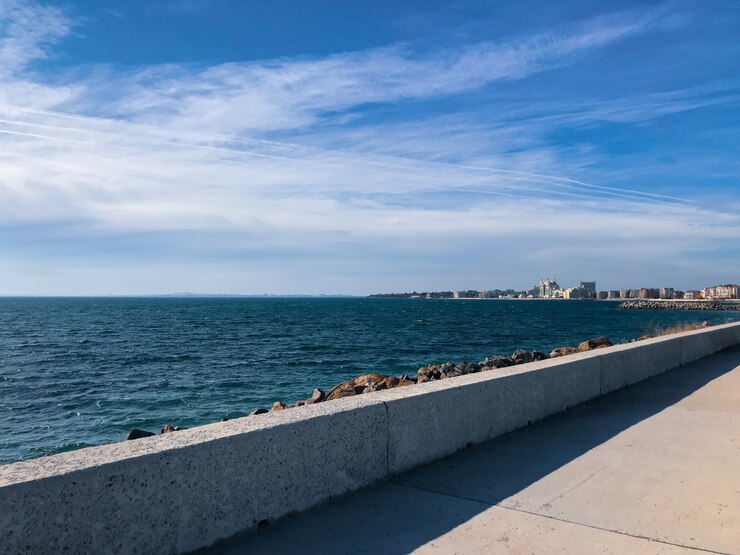Water can be both a friend and a foe, especially when it comes to property protection. In DFW, where storms and heavy rains aren’t uncommon, seawalls play a critical role in safeguarding coastal properties from the power of water. Seawalls act like protective barriers, preventing coastline erosion and keeping the land behind them safe. However, water damage can compromise the integrity of these structures, posing risks to both property and safety.
Maintaining seawall integrity is key for all property owners. If a seawall weakens, it can lead to soil erosion, flooding, and structural damage. Knowing how water damage affects seawalls and what signs to look for can save property owners from unexpected headaches. By understanding these aspects, you can ensure your seawall remains a strong shield against the forces of nature.
Causes of Seawall Damage
Water damage to seawalls is a common concern for property owners, particularly in coastal regions like DFW. Understanding the primary causes of such damage can help in preventing major issues.
1. Natural Wear and Tear: Just like any other structure, seawalls face wear and tear over time. Continuous exposure to saltwater and waves gradually weakens the construction materials, leading to cracks and leaks. It’s important to routinely check for signs of aging and address minor issues before they escalate.
2. Severe Weather Conditions: Intense storms, high tides, and flooding can severely impact seawalls. These weather patterns create powerful waves that pound against the seawall, accelerating damage. After a storm, inspect your seawall for noticeable changes or damage.
3. Poor Initial Construction: Sometimes, the problem starts with how the seawall was built. A seawall constructed with subpar materials or improper techniques can collapse under environmental pressures more quickly than a well-built one. Ensuring the wall was installed correctly can prevent many problems down the line.
Avoiding these issues isn’t always possible, but knowing what to watch for can make the difference in maintaining your property’s safety and value. Regular inspections and prompt repairs can significantly extend your seawall’s lifespan.
Signs Your Seawall Needs Repair
Keeping a watchful eye on your seawall allows you to catch problems early. There are some clear warning signs that indicate when a seawall is crying out for help. First, it’s crucial to look for any visible cracks or fractures. Even small ones can expand rapidly if left unaddressed, leading to costly repairs.
Another sign is erosion around the seawall. This usually happens when water starts eating away the soil behind the wall, which can weaken its support structure. Erosion might leave noticeable gaps or holes near the base of the wall.
Finally, check if any sections of your seawall appear to be tilting or leaning. This leaning can suggest internal structural issues that require fast action. Promptly addressing these signs can go a long way in maintaining your seawall’s effectiveness.
Steps to Repair the Seawall
Once the signs of damage are clear, the next step is repairing the seawall. Begin with a thorough inspection and assessment. This step helps in understanding the root cause of the damage and identifying the best approach for repairs.
After assessing the damage, selecting the right repair method follows. Here, it’s key to weigh options like patching cracks, adding reinforcements, or replacing damaged sections. Each option depends on the extent of the damage and the materials used in the seawall’s construction.
Finally, enlisting the help of professional services is recommended. Experts equipped with the right tools and knowledge can ensure the seawall is repaired effectively and efficiently. Relying on experienced professionals can save time and guarantee a durable repair solution.
Preventative Measures for Seawall Maintenance
Prevention is always better than cure, especially when it comes to seawall maintenance. Prioritize regular inspections as part of your routine. Regular check-ups help catch minor issues before they develop into significant problems.
Enhance your drainage systems to prevent water from seeping behind the seawall. Ensuring proper drainage helps reduce the pressure that water can exert on the seawall, minimizing the chance of erosion or structural failure.
Using high-quality materials for any repairs or renovations is another important measure. Opt for robust materials that can withstand harsh weather conditions and offer long-lasting performance. This proactive approach will help maintain the seawall’s strength and effectiveness over the years.
Protecting Your Coastal Property
A well-maintained seawall is more than just a line of defense—it’s key to protecting your property from environmental threats. With the correct upkeep, seawalls can continue to safeguard against eroding coastlines and flooding, preserving the land they defend. Committing to regular assessments and addressing small issues promptly makes a significant difference in maintaining the seawall’s integrity.
Keeping the seawall in top shape not only helps today but secures the future of your property. Proactive measures ensure that minor issues are handled before they escalate. This commitment to upkeep provides peace of mind that your property remains protected season after season. Solutions found through timely interventions can keep your seawall strong and your property safe for years to come.
For peace of mind and assurance that your property remains secure against water and erosion, trust Lift-Texas Construction with your seawall needs. Discover how professional services can efficiently handle issues when you need to repair the seawall, ensuring long-term protection and stability for your coastal property.

